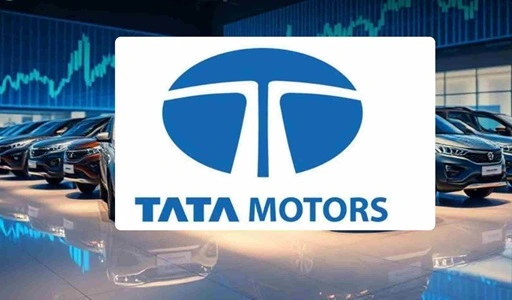Tata Motors, a cornerstone of the Tata Group, continues to redefine the contours of India’s automotive industry. From manufacturing India’s first indigenous car, the Indica, to becoming a global leader in electric vehicles and commercial transportation, Tata Motors has come a long way. As of 2025, the company holds a dominant position in the Indian auto market, while also making significant strides internationally through its subsidiaries like Jaguar Land Rover (JLR).
In the current landscape marked by the rapid transition to electric mobility, tightening emission norms, and global supply chain challenges, Tata Motors has demonstrated remarkable agility and vision. With the launch of the Tata.ev division, investments in hydrogen fuel cell technology, and continued excellence in commercial vehicles, the company stands as a model of modern Indian enterprise. This SWOT analysis will explore the Strengths, Weaknesses, Opportunities, and Threats that define Tata Motors’ position in 2025.

Strengths: Built on a Legacy of Innovation and Trust
1. Market Leadership in Electric Vehicles (EVs)
Tata Motors is the undisputed leader in India’s EV market, with over 80% market share as of early 2025. Models like the Tata Nexon.ev, Tiago.ev, and the newly launched Punch.ev have redefined affordability and practicality in the Indian EV segment. The dedicated Tata.ev brand, launched in 2023, has helped streamline its EV strategy and increase consumer confidence.
2. Robust Product Portfolio Across Segments
Tata Motors has a strong presence in passenger vehicles, electric vehicles, commercial vehicles, and luxury vehicles via JLR. This diversified portfolio enables it to withstand volatility in any one segment and gives it access to both premium and mass-market consumers.
3. Global Footprint through Jaguar Land Rover (JLR)
JLR, a wholly owned subsidiary, contributes significantly to Tata Motors’ global revenues. In 2024, JLR achieved a turnaround, posting its highest quarterly profits in five years, driven by strong demand in China, the UK, and the U.S., especially for models like the Range Rover Electric and Defender.
4. Innovation and Sustainability Focus
Tata Motors continues to invest in R&D, battery technology, hydrogen-powered vehicles, and smart mobility. The company also supports sustainable manufacturing, with major plants running on renewable energy and a goal to achieve net-zero emissions by 2040.
5. Strong Brand Equity and Consumer Trust
Built on the Tata Group’s legacy, Tata Motors enjoys high levels of trust among Indian consumers. Its vehicles are increasingly seen as safe, durable, and value-for-money, with models like the Altroz, Harrier, and Safari receiving high safety ratings from Global NCAP.
Weaknesses: Challenges That Demand Attention
1. Limited Global Penetration Beyond JLR
While JLR is globally recognized, Tata-branded passenger vehicles are still largely confined to the Indian market. The company has not yet replicated the same success in emerging or developed markets outside India, limiting global diversification.
2. High Debt Levels
Despite improved financial performance, Tata Motors continues to carry substantial debt, partly due to past losses from JLR and continued capital expenditure in EV and tech R&D. Managing debt while funding innovation remains a balancing act.
3. After-Sales Service in Rural Areas
Though improving, the after-sales and service network—especially in semi-urban and rural areas—lags behind competitors like Maruti Suzuki. This can impact customer retention and satisfaction in price-sensitive segments.
Opportunities: Gearing Up for the Next Growth Phase
1. EV Market Expansion in India and Abroad
India’s EV ecosystem is evolving rapidly with government support under FAME II and upcoming FAME III policies. Tata Motors can further consolidate its lead by launching affordable EVs under ₹10 lakhs and expanding to countries in Southeast Asia and Africa with similar market dynamics.
2. Hydrogen and Alternative Fuels
In early 2025, Tata Motors unveiled its first hydrogen fuel cell concept for heavy commercial vehicles. With government incentives and growing awareness around green hydrogen, Tata Motors has a chance to lead in this nascent but promising segment.
3. Export and Global Expansion
Tata’s success in India can be replicated in markets with similar needs, such as Indonesia, Brazil, and parts of Africa. With its growing reputation for safety, design, and affordability, Tata Motors is well-positioned to scale globally in the next few years.
4. Technological Partnerships
Collaborations with Tata Power, Tata Elxsi, and global tech companies in the areas of EV charging infrastructure, software-defined vehicles (SDVs), and autonomous driving offer Tata Motors a unique advantage. These synergies can shape the future of mobility in India and beyond.
Threats: Roadblocks to Navigate
1. Intense Competition in EV and Passenger Vehicle Markets
Players like Mahindra, BYD, Hyundai, and MG are rapidly expanding their EV portfolios. Moreover, Tesla’s delayed India entry, if realized, could further intensify competition in the premium EV space.
2. Global Economic Volatility
Fluctuations in global supply chains, chip shortages, and raw material prices (especially lithium and cobalt) can disrupt production timelines and impact profitability, particularly in EV manufacturing.
3. Regulatory and Policy Risks
Changing regulations, emission norms, and taxation policies—both in India and abroad—can create compliance challenges. Any abrupt policy shift, especially around subsidies, could impact Tata’s EV ambitions.
4. Dependence on JLR for Global Prestige
A significant portion of Tata Motors’ global reputation and revenue is still tied to JLR. Any downturn in luxury demand, geopolitical issues (like Brexit), or poor model performance could affect the overall brand.
Conclusion: Driving Into a Promising Future
Tata Motors in 2025 exemplifies the spirit of the New India—ambitious, innovative, and committed to sustainability. It has leveraged its strengths, acknowledged its challenges, and actively pursued opportunities to not just lead the Indian market but influence global trends.
As a SWOT analyst and content creator based in India, it’s clear that Tata Motors is not just a car manufacturer anymore—it’s a mobility solutions provider, shaping how millions move, live, and experience transportation. With the right mix of technology, vision, and execution, Tata Motors is firmly steering toward a greener, smarter, and more inclusive future.

Meet Suhas Harshe, a financial advisor committed to assisting people and businesses in confidently understanding and managing the complexities of the financial world. Suhas has shared his knowledge on various topics like business, investment strategies, optimizing taxes, and promoting financial well-being through articles in InvestmentDose.com


